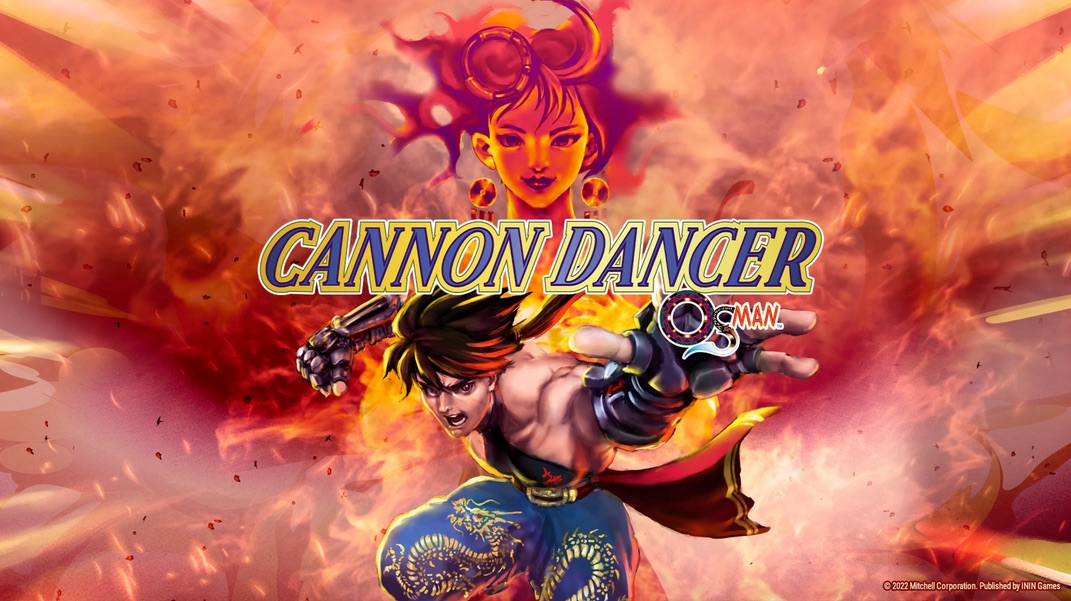
When arcades were still gathering hubs for hardcore gaming, patrons could partake in all kinds of games that consoles at the time could not deliver. In 1989, Capcom’s Strider would make a powerful impression on gamers with its stylish anime action with lighting fast swordplay, free-climbing, platforming, and bold graphics.
Strider was the kind of game that kids in the early 90s could only dream about because it was pretty rare and the NES port was barely a shadow of it. The closest gamers could get to something like it was Run Saber in 1993 for the SNES. While that game was good in its own right, it never could match arcade-like speed and spectacle.
Kouichi Yotsui, Strider‘s creator would eventually leave Capcom and try to make a spiritual successor with Cannon Dancer. While it would be simply known as Osman in the United States, arcades began to fall out of style around the mid to late 90s and Osman cabinets would become more obscure than Strider. How has time treated this mythical arcade action game? Does it hold up? Find out in this Cannon Dancer – Osman review!
Cannon Dancer – Osman
Developer: Ratalaika Games, Mitchell Corporation
Publisher: ININ Games, Mitchell Corporation, United Games Entertainment GmbH
Platforms: Arcade, PlayStation 4, PlayStation 5, Xbox One, Xbox Series X|S, Nintendo Switch (reviewed)
Release Date: April 13, 2013, February 13, 1996
Players: 1
Price: $29.99 USD
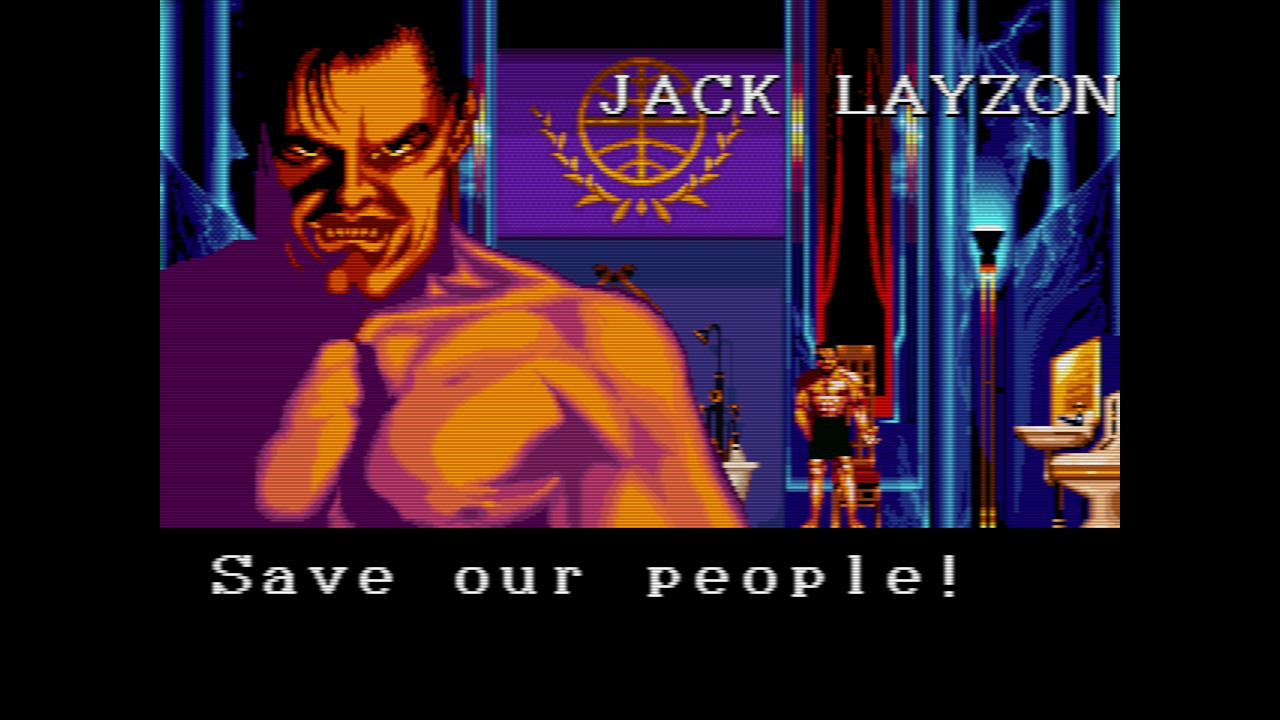
Anyone who was a fan of Strider will feel at home in Cannon Dancer – Osman. Both games have a similar premise where a lone warrior is set loose in a foreign nation, fights an entire army, and battles enormous cybernetic monstrosities. Both games also share similar kinesthetic feedback in the hero’s controls and diabolical challenges.
When Strider came out, the Cold War was still going on and Cannon Dancer – Osman would ditch the futuristic Russian-inspired setting for what can be best described as an Arabic cyberpunk dystopia. The intro features a really ripped, pissed-off-looking dude named Jack Layzon and he hires Osman/Kirin to do some dirty work.
Jack very obviously does not look like he is on the level when our hero is given his mission. When Osman/Kirin completes his assassination, Jack betrays him and then the real threat of the Cannon Dancer epic emerges. What follows is a bizarre fever dream of visuals that resembles a Strider parody and a spiritual journey across space that ends with a battle against a diety and winning ownership of Earth itself.
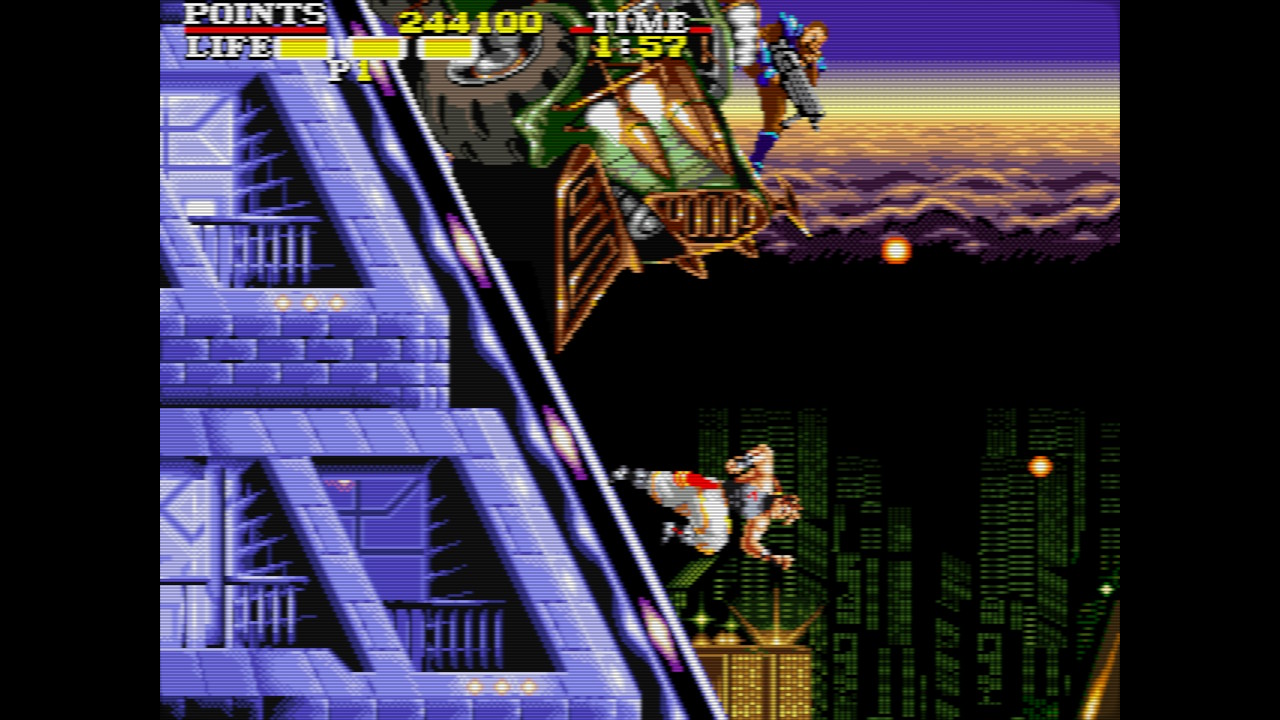
The incoherent and surreal narrative is not why kids pumped quarters into Osman in the 90s- what was attractive was the intense imagery and dazzling pixel art. The attract mode is a beautiful showcase of what is to come and shows off the viscerally stylish martial arts and violence.
Osman looks incredible. It is still leaps and bounds ahead of the curve of most 2D pixel art games made today. The hero has countless frames of animation and the backgrounds are glittering with details that make every scene feel lively.
The number of effects and projectiles on screen can be overwhelming and compounded with Osman’s ability to multiply, it veers close to sensory overload.
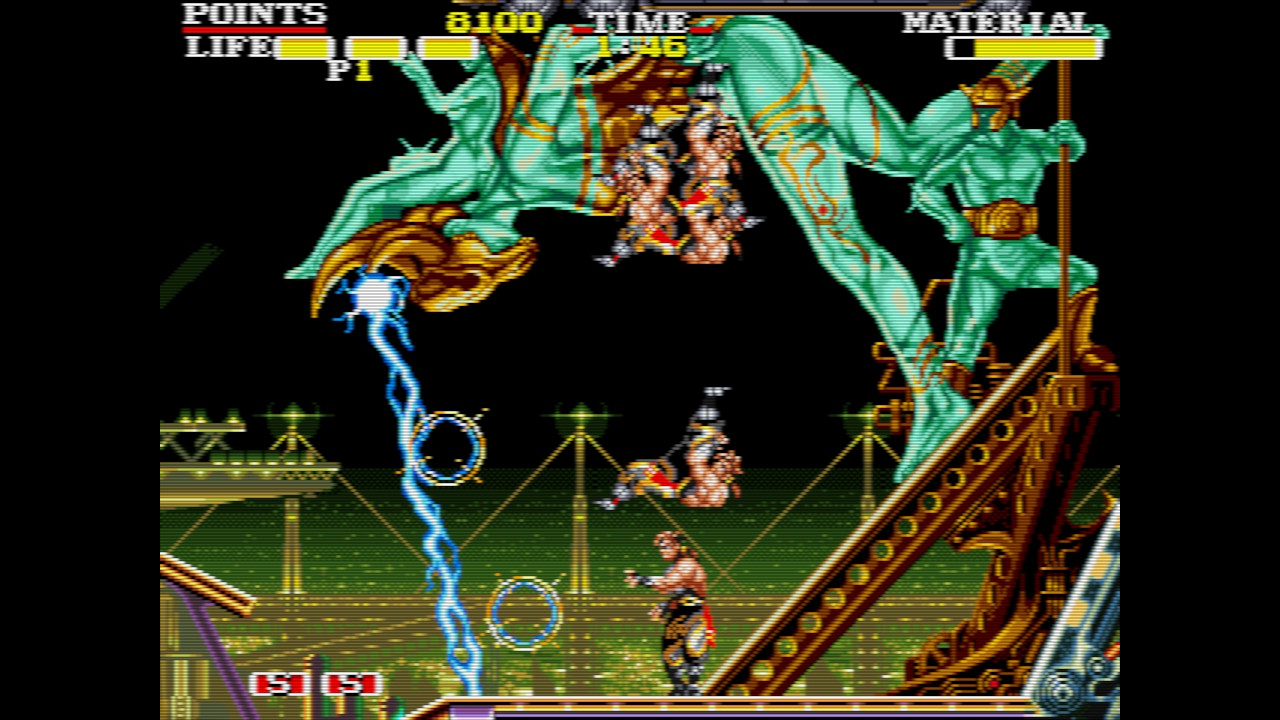
The overbearing graphics might make the Cannon Dancer – Osman harder than it is. There is a lot to account for when fighting and progressing through the stages. The absurd threat that is trying to eliminate our hero is too much even for the most hardcore gamer.
Bullets will come from all directions, stage hazards are not always telegraphed and out of nowhere, a deadly truck will make Osman into a Jackson Pollock painting on the side of a building.
Saying Cannon Dancer – Osman is difficult is an understatement. This game was designed to suck out quarters out of players in 96 and is balanced completely against any notions of fairness.
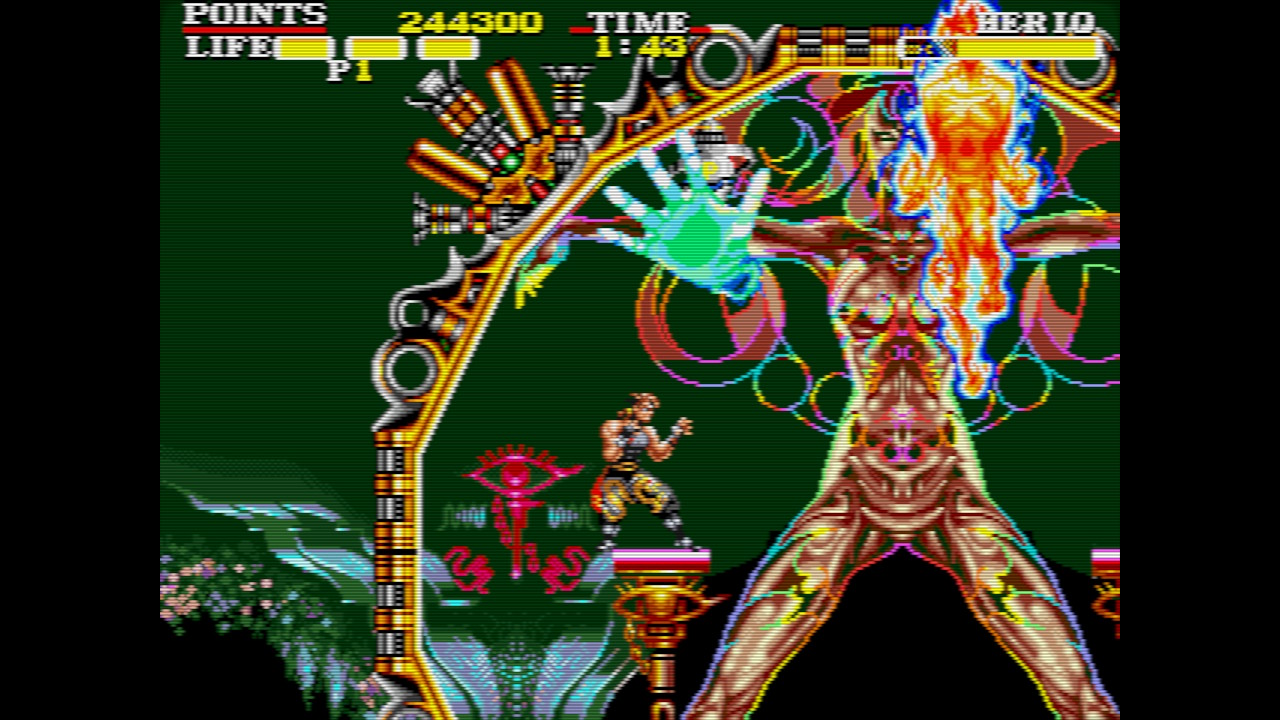
The fact that this latest port includes a “challenge mode” that allows players to choose two enhancements to level the playing field a little bit is an admission that the original Osman is nigh unbeatable if played with one credit.
For how insanely overpowered the hero is, he is equally fragile at the same time since he can be utterly melted by being stun-locked into an unfair death.
The inclusion of new “enhancements” entail adding bonus invincibility frames to certain actions to level the playing field. A double jump or invincibility can be applied to jumps, sliding, or attacking, and even then; most gamers won’t stand a chance of getting past the first stage.
The “standard” mode is where gamers can play Cannon Dancer – Osman with all enhancements activated and even play with cheats too. Players will be able to add credits and effectively beat the game with no implements or friction at all. At that point, why even bother?

Playing the game with unlimited tries trivializes the experience since Osman respawns immediately in the place where he died. What Cannon Dancer – Osman needed is a mode or setting that sends the player back to the start of the stage with unlimited chances to retry. This would ensure players still get a taste of the challenge and won’t be able to cheese through battles.
Powering through the game’s standard mode will let players see the ending in about 40 minutes. For an arcade conversion to consoles, this makes the $29.99 cost very steep.
Assault Suits Valken: Declassified was a similarly steeply-priced action game but at least came with a wealth of extras and a complete guide to browse. Cannon Dancer – Osman is very light with extras; it only has the English and Japanese versions of one game.
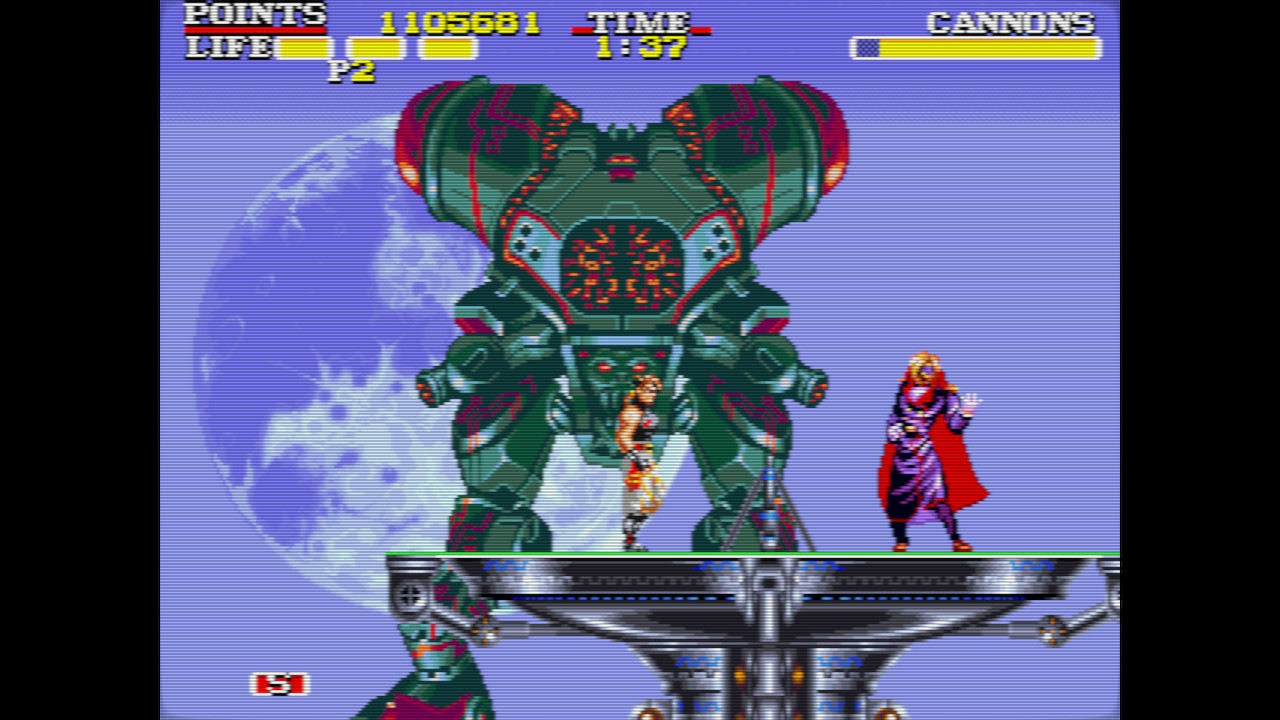
One of the most confusing aspects of Cannon Dancer – Osman is how this new version handles trophies/achievements. While achievements are never a reason to play any game, for some people it can add replayability.
When playing standard mode, achievements are understandably disabled because players can cheat and use all enhancements which is understandable. The only way to unlock achievements is to play in the brutal challenge mode, which makes sense.
The problem is that the Switch version does not keep track of achievements/trophies and there is no in-game list or a page of icons. This may not be a problem for the PlayStation or Xbox versions, but the feature is effectively missing on Switch despite what the in-game text says.
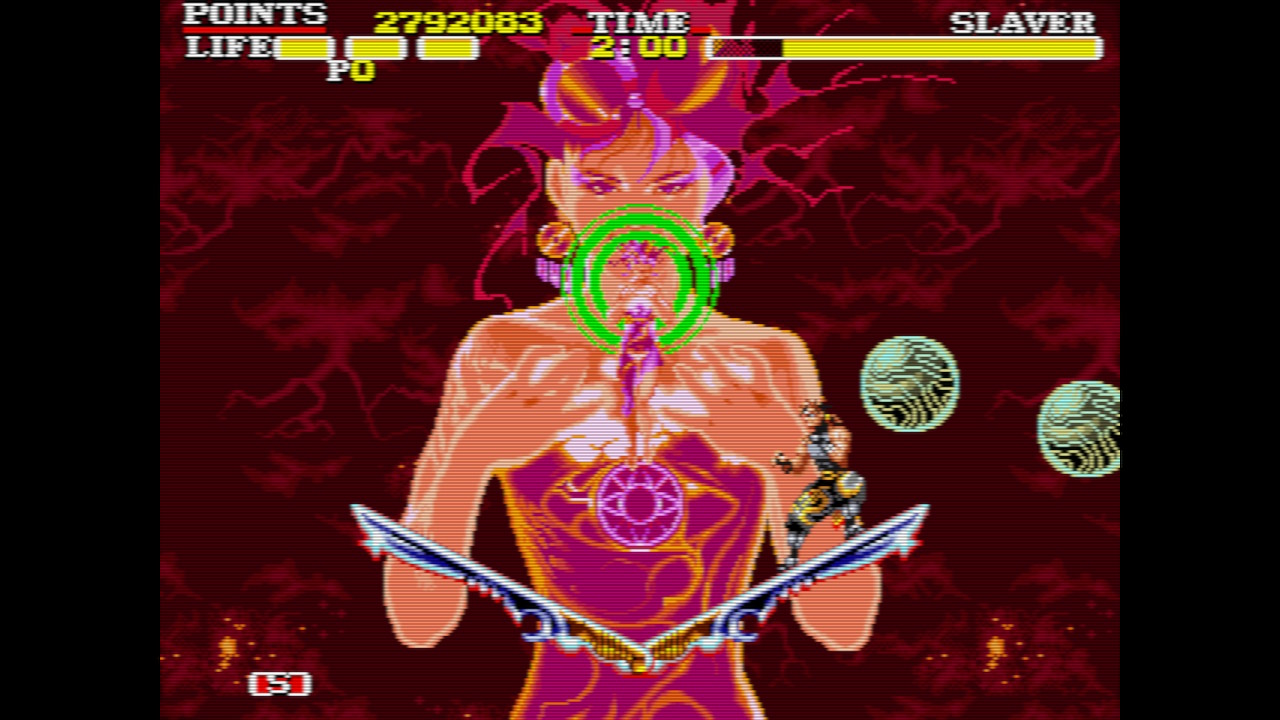
For $29.99, this should have been a compilation of a few games. On the eShop, the Arcade Archives line features very similar arcade games like Metal Slug 3 or Elevator Action for under $9.99 each. Cannon Dancer – Osman would feel so much fairer if it was priced like its contemporaries. They should have added some of the Buster Bros. or a few Puzzle Loop games to sweeten the deal.
Cannon Dancer – Osman is from the arcade game age. A time when games weren’t designed to be fair but came with glitzy and alluring visuals to get the attention of a passerby. It is honest about what you get; a flashy action platformer with a ton of personality and lurid visuals with an unclear meaning. The game is as brilliant and bright as a slot machine and is just as fair.
Cannon Dancer – Osman was reviewed on Nintendo Switch using a copy provided by ININ Games. You can find additional information about Niche Gamer’s review/ethics policy here. Cannon Dancer – Osman is now available for PlayStation 4, PlayStation 5, Xbox One, Xbox Series X|S, and Nintendo Switch.